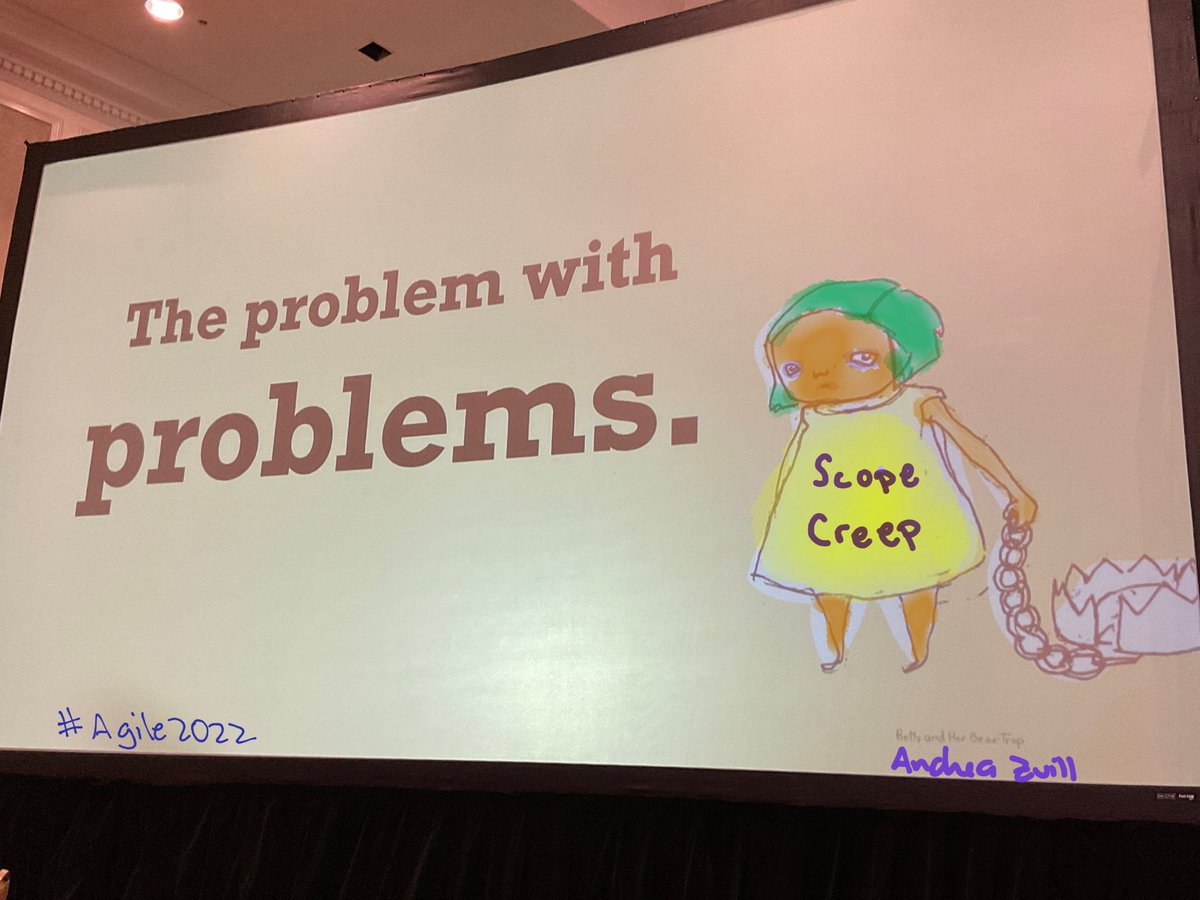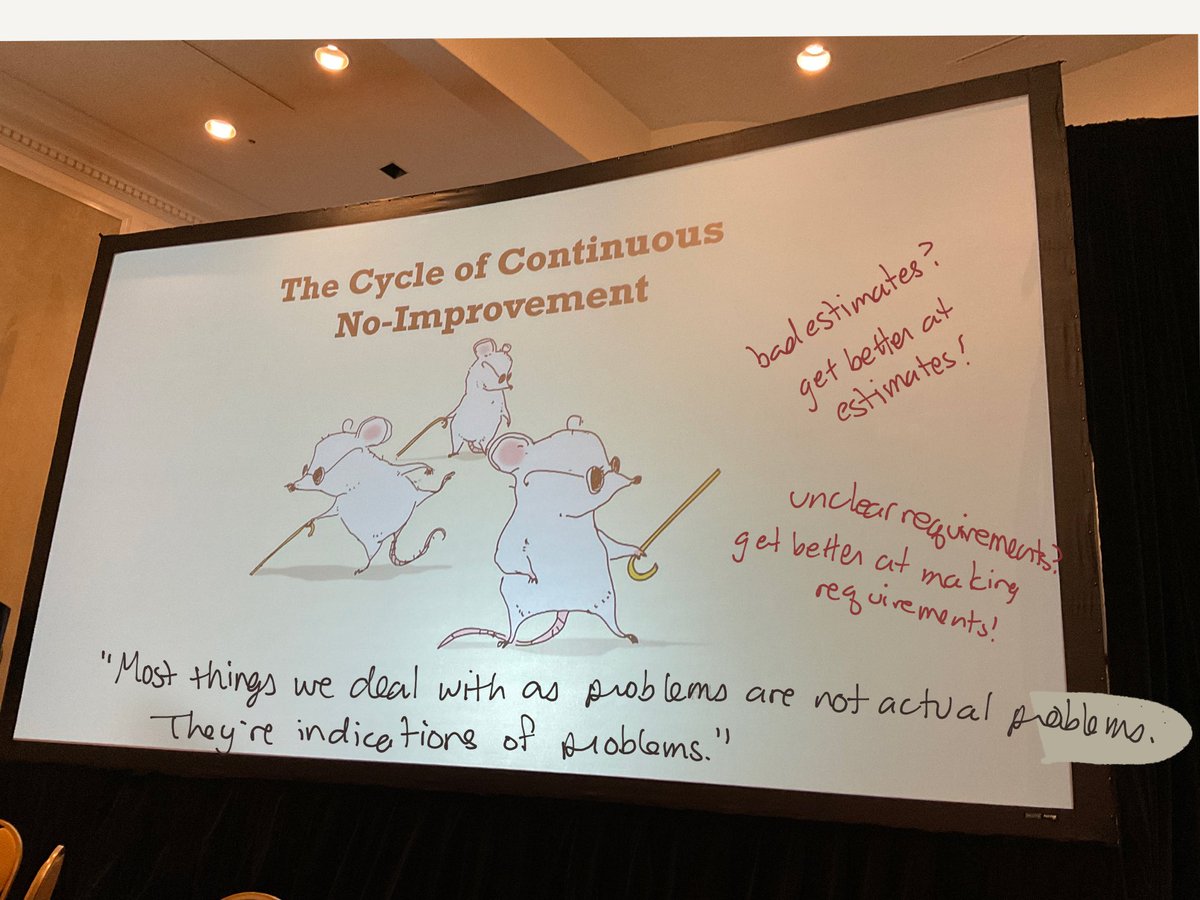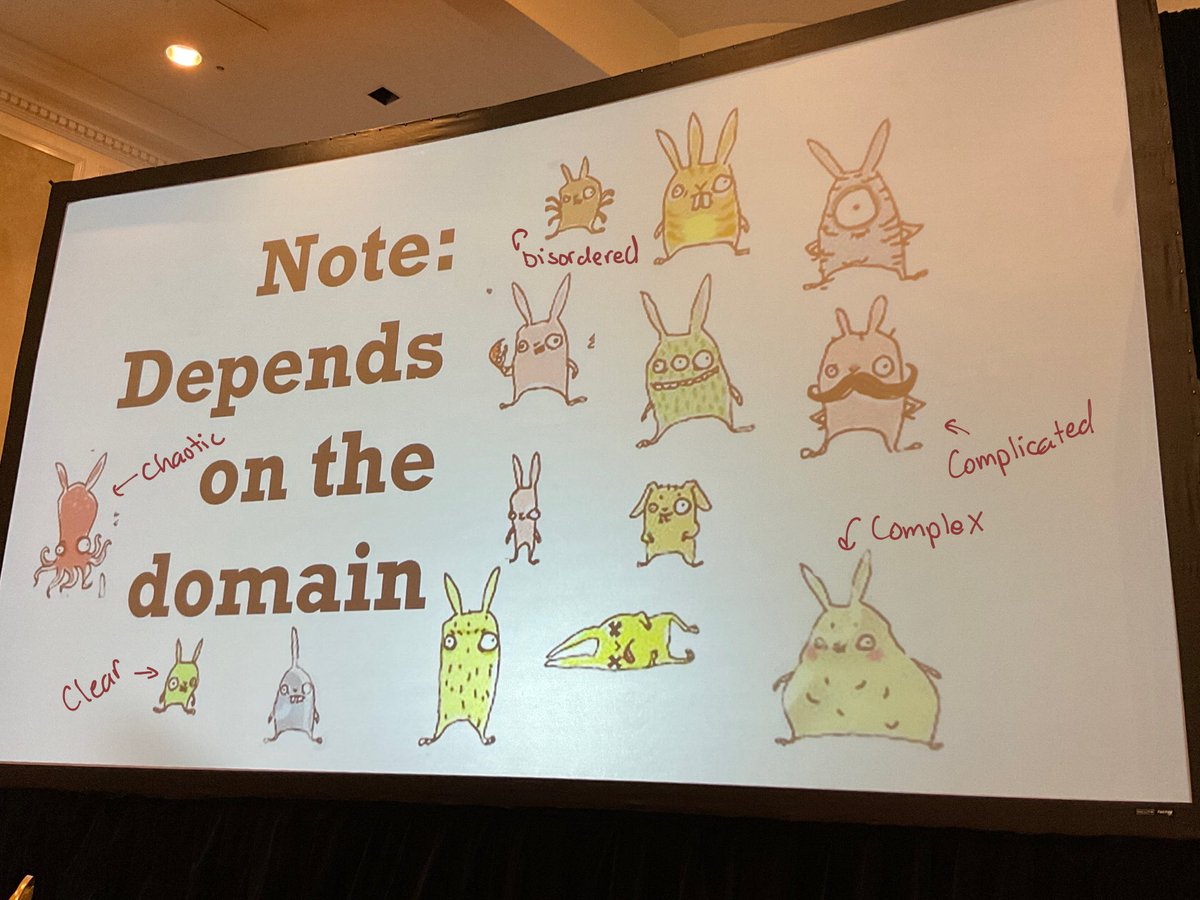
The team deserves someone
who wants to manage people.
who is not bitter about meetings
who is interested in sociotechnical systems and nurturing careers
whose technical skills are strong enough to evaluate their work.
@mipsytipsy #QConSF
who wants to manage people.
who is not bitter about meetings
who is interested in sociotechnical systems and nurturing careers
whose technical skills are strong enough to evaluate their work.
@mipsytipsy #QConSF
And each of us deserves a long, interesting career.
Trick: don’t self-identify as a manager OR as engineer.
Look at yourself as a Technologist
Or Technical Leader
… who needs engineering AND management skills.
@mipsytipsy #QConSF
Trick: don’t self-identify as a manager OR as engineer.
Look at yourself as a Technologist
Or Technical Leader
… who needs engineering AND management skills.
@mipsytipsy #QConSF
The best line managers have written serious code within 5 years or so.
The best tech leads and staff engineers have spent time as people managers.
Being a manager helps you get better at wielding influence without authority.
@mipsytipsy #QConSF
The best tech leads and staff engineers have spent time as people managers.
Being a manager helps you get better at wielding influence without authority.
@mipsytipsy #QConSF
You can’t get better at being an engineer and at being a manager at the same time.
Engineers need focus time; management is all about interruptions.
@mipsytipsy #QConSF
Engineers need focus time; management is all about interruptions.
@mipsytipsy #QConSF
Don’t let anyone make you a manager before you’re an experienced senior engineer.
You need 7-10 years as an engineer first.
You don’t need to be the BEST engineer; you do need to develop judgement and perspective.
You need 7-10 years as an engineer first.
You don’t need to be the BEST engineer; you do need to develop judgement and perspective.
Try management for at least 2 years
But fewer than 5.
Swing back before you become unhirable as an engineer.
You get worse as engineering manager as your tech skills deteriorate.
@mipsytipsy #QConSF
But fewer than 5.
Swing back before you become unhirable as an engineer.
You get worse as engineering manager as your tech skills deteriorate.
@mipsytipsy #QConSF
Management skills are stickier than engineering skills (they last longer)
But even more localized (particular to a company).
But even more localized (particular to a company).
As a manager, stop writing code _in the critical path_.
Do contribute in small, supportive ways.
Fix some low-priority bugs.
Be the on-call backup of first resort.
@mipsytipsy #QConSF
Do contribute in small, supportive ways.
Fix some low-priority bugs.
Be the on-call backup of first resort.
@mipsytipsy #QConSF
In software:
Management is organizational leadership with technical aspects.
Engineering is technical leadership with an organizational aspect.
There’s a lot of overlap, so moving between them is useful.
@mipsytipsy #QConSF
Management is organizational leadership with technical aspects.
Engineering is technical leadership with an organizational aspect.
There’s a lot of overlap, so moving between them is useful.
@mipsytipsy #QConSF
As a senior manager… swing back to engineering, or move toward director or VP?
Everybody starts out thinking they want to climb the ladder.
Until they do the job of management ;-)
Everybody starts out thinking they want to climb the ladder.
Until they do the job of management ;-)
The role-based power of management, it’s a weak power: you don’t take it with you.
Technical and personal influence, that’s about you, not the title.
Technical and personal influence, that’s about you, not the title.
When management is not a promotion (it’s a change of career)
then engineering is not a demotion.
Choose the job that brings you joy, not status.
@mipsytipsy #QConSF
then engineering is not a demotion.
Choose the job that brings you joy, not status.
@mipsytipsy #QConSF
Career advancement is about luck and opportunism.
For success:
Lean into the opportunities that cross your path,
don’t get your heart set on a particular outcome.
@mipsytipsy #QConSF
For success:
Lean into the opportunities that cross your path,
don’t get your heart set on a particular outcome.
@mipsytipsy #QConSF
Maximize your options in the future:
* keep your technical skills fresh (and your interview skills)
* Make friends: know people outside your work
* speak andwrite: people know you
* be T-shaped: googleable on one topic, hold conversations on many
and…
* keep your technical skills fresh (and your interview skills)
* Make friends: know people outside your work
* speak andwrite: people know you
* be T-shaped: googleable on one topic, hold conversations on many
and…
* change your role (if not your job) every 2-3 years
“I’ve got it all under control, that’s a terrible spot. You’re not growing.”
@mipsytipsy #QConSF
“I’ve got it all under control, that’s a terrible spot. You’re not growing.”
@mipsytipsy #QConSF
Choosing only management narrows your options:
* there are fewer job openings as you climb
* Your skill set is more local
* so job tenure lengthens; you can’t leave as easily
* your ability to succeed is dependent on the company
@mipsytipsy
* there are fewer job openings as you climb
* Your skill set is more local
* so job tenure lengthens; you can’t leave as easily
* your ability to succeed is dependent on the company
@mipsytipsy
Execs be like: “What? Managers moving back to eng? Wasted investment!”
But it is not a loss! This is how you cultivate great eng leadership,
and retain top talent (plus institutional memory). Keep them in the zone of “still learning, it’s hard but I can do it”
But it is not a loss! This is how you cultivate great eng leadership,
and retain top talent (plus institutional memory). Keep them in the zone of “still learning, it’s hard but I can do it”
Management != Leadership
Tech leadership matters just as much!
alternating between them gets you better management _and_ better technical execution.
@mipsytipsy #QConSF
Tech leadership matters just as much!
alternating between them gets you better management _and_ better technical execution.
@mipsytipsy #QConSF
Demystify management:
Decompose it into constituent skills.
* Running a meeting <- a skill every contributor should have
* Planning
* Recruiting and hiring
* Interning (being responsible for others’ success)
(What else?)
Decompose it into constituent skills.
* Running a meeting <- a skill every contributor should have
* Planning
* Recruiting and hiring
* Interning (being responsible for others’ success)
(What else?)
Access to information about the business is not a privilege of management.
It’s a right for every contributor.
@mipsytipsy #QConSF
It’s a right for every contributor.
@mipsytipsy #QConSF
If you go into management to know what’s going on and have influence,
Ok… but do you perpetuate that reason? Do you hoard knowledge?
That part is bad.
@mipsytipsy #QConSF
Ok… but do you perpetuate that reason? Do you hoard knowledge?
That part is bad.
@mipsytipsy #QConSF
a healthy hierarchy takes transparency seriously.
Don’t build a system where people have to be a manager to be a loop or have a seat at the table.
@mipsytipsy #QConSF
Don’t build a system where people have to be a manager to be a loop or have a seat at the table.
@mipsytipsy #QConSF
Management is overhead. It is a support function.
Your company exists because of the contributors.
Visualize your hierarchy upside-down.
@mipsytipsy #QConSF
Your company exists because of the contributors.
Visualize your hierarchy upside-down.
@mipsytipsy #QConSF
Only you get to say what success looks like for you.
It doesn’t look the same at the beginning, middle, end of our careers.
Don’t have a goal; do have a direction. Go in a direction that stimulates you and makes you happy.
@mipsytipsy #QConSF
It doesn’t look the same at the beginning, middle, end of our careers.
Don’t have a goal; do have a direction. Go in a direction that stimulates you and makes you happy.
@mipsytipsy #QConSF
• • •
Missing some Tweet in this thread? You can try to
force a refresh

















